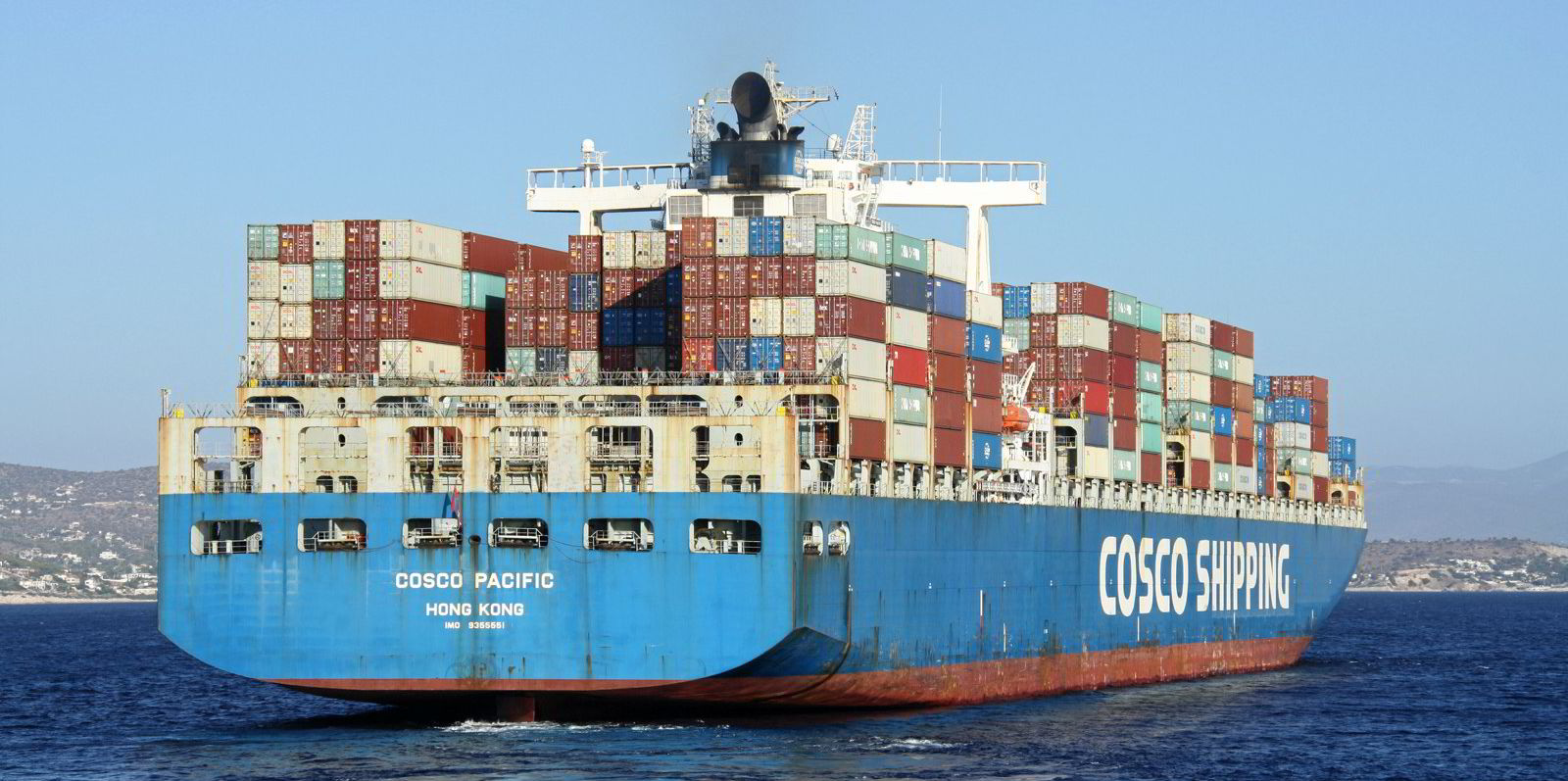CMA CGM has moved to secure chartered and secondhand tonnage, in a sign that the free-fall in container ship markets may be bottoming out.
The Rodolphe Saade-backed liner operator has moved before rival operators to fix five vessels from feeders up to classic panamax boxships.
The move has breathed life into a market in which players have remained on the sidelines in recent weeks as rates have fallen.
The CMA CGM fixtures were among 14 vessels taken on charter by ocean carriers in the past week, according to shipbroker Braemar.
While the market has been its busiest for two months, charter periods and rates are shorter and lower than last done.
The CMA CGM fixtures comprise a handful of 1,700-teu units taken for short periods of up to six months at between $14,000 and $15,000 per day.
The 1,700-teu Ela (built 2012) was taken for four to six months at about $14,200 per day.
That is a steep decline from the $31,000 per day being paid for such vessels one month ago, according to New Contex.
It is also way down on the $69,000 per day that China’s Cosco Shipping Lines paid to take the Ela for a short fixture in July.
Other ships fixed by CMA CGM on similar terms are the 1,841-teu San Alfonso (built 2007), 1,700-teu X-Press Nuptse (built 2014) and White Dragon (built 2007).
In the classic panamax sector, the French liner operator has refixed the 4,250-teu Navios Azure (built 2007) for five to seven months at about $23,000 per day — down from around $40,000 per day for 12-month fixtures in September.
Container ship charter rates are quickly returning to more “normal” territory, according to Clarksons Research, and operators have generally adopted a wait-and-see approach.
Safeen takes Blystad boxship
The flurry of fixtures has flushed out buyers in the secondhand market.
CMA CGM is believed to have finalised the purchase of a nine-year-old sub-panamax from German interests.
The 3,400-teu Spirit of New Delhi (built 2013) was first reported sold in August. The vessel is reported to have been acquired from the Rickmers family-controlled Asian Spirit Steamship Co.
The vessel, which operates on long-term charter as CMA CGM Lome, is said to be worth about $38m, according to Maritime Strategies International.
Similarly, Norwegian investor Arne Blystad has hived off a feeder newbuilding under construction in China.

His privately controlled container ship vehicle Songa Box has sold the 1,800-teu Songa Jaguar to Abu Dhabi-based Safeen Group, according to European brokers.
The vessel is being built at Huanghai Shipbuilding for delivery in October 2022.
It is one of three Bangkokmaxes of the Sealion 1800 designs that were ordered in August 2021. Values for such vessels have dropped from more than $50m in April to about $30m today, according to VesselsValue.
Long-term freight rates tumble
The slowing rate of market decline is mirrored in the container freight market.
Spot freight rates from China to the US West Coast remain at $2,494 per 40-foot equivalent unit (feu) — roughly where they have been since the start of October.
The pace of decrease from China to North Europe has also slowed, with rates slipping to $4,823 per feu.
But while spot rates are stabilising, there are signs that the fall in long-term contracts freight rates is just beginning.
Significant drops in long-term contracted rates are emerging on selected, major routes.
Newly contracted long-term rates from the Far East to the Mediterranean have dropped away by 30% since the end of September, according to Xeneta Shipping Index.
Patrik Berglund, chief executive of freight rate portal Xeneta, said: “Even on the routes where we’re seeing robust long-term rates, such as the US East Coast, there’s a question of whether anyone approaching next year’s tenders will agree to them when spot rates are so much lower.
“What we may well see is shippers looking to transfer volumes to the spot market, spooking carriers desperate to tie in business.
“The result? Carriers could be forced to lower those coveted contracted rates.”







